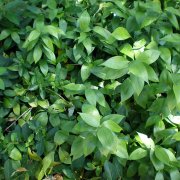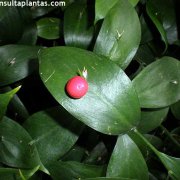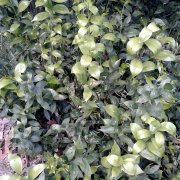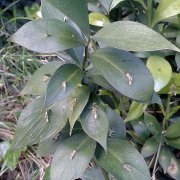Care of the shrub Ruscus hypoglossum or Spineless Butcher's-broom |
|
The genus Ruscus, family Asparagaceae, includes 6 species of shrubs native to Europe, the Middle East, North Africa and Macaronesia. Some species are: Ruscus hypoglossum, Ruscus aculeatus, Ruscus colchicus. Common names: Spineless Butcher's-broom, Mouse thorn, Horse tongue lily. This species is native to Central Europe and the Eastern Mediterranean. They are evergreen shrubs with flexible stems that reach 45 cm (17.7") in height. The leaves are cladodes (stem modifications) not spiny up to 10 cm (3.93") in length. The flowers are yellow but they are not decorative. The red fruits (toxic by ingestion) of up to 2 cm (0.78") in diameter are very decorative. Spineless Butcher's-broom is used to cover shady areas of the garden, in dark undergrowths and in pots. It's ideal for coastal gardens and combines very well with ferns of the Polypodium genus. Ruscus hypoglossum needs shade exposure. It resists frost down to -9 ºC (15.8 ºF). Mouse thorn grows in any type of soil but prefer it to contain organic matter. Planting is done in early spring at the rate of 3 plants per square meter. Water regularly, waiting for the substrate to be almost dry; reduce watering in winter and increase it slightly in summer. Horse tongue lily does not need fertilizers. Ruscus hypoglossum accepts a light pruning in autumn to maintain a compact appearance. Spineless Butcher's-broom is a resistant plant to the usual pests and diseases. Mouse thorn propagates by division in late winter. |
Images of the shrub Ruscus hypoglossum or Spineless Butcher's-broom |
Find plants
Ruscus hypoglossum or Spineless Butcher's-broom | Care and Growing
© 2025 FavThemes



